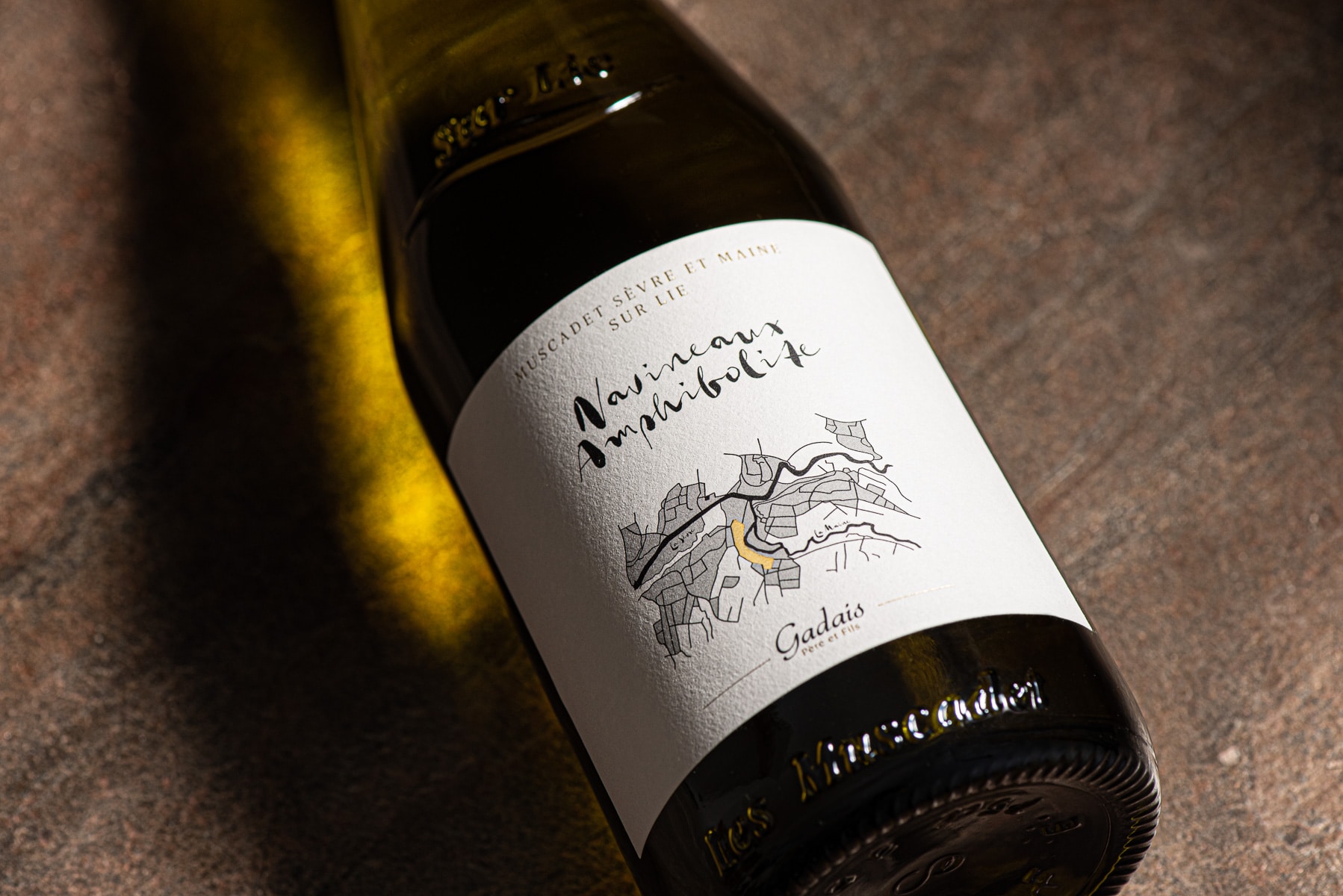Cuvées - sur-lie Muscadet Sèvre et Maine
In the cellar, nothing is left to chance. These stunning new semi-underground facilities allow us to use gravity-fed winemaking with the greatest respect for the harvest. The wines undergo minimal intervention to preserve their original quality. The geothermics used here prevent any unnecessary energy consumption, for the good of the planet. In this range of cuvées, from the simplest to the most elaborate, the terroir is magnified. These Muscadets from Sèvre-et-Maine are primarily aged sur lie, endowing the wines with richness, harmony, silky texture, and minerality.
Grande Réserve des Moulins
On the hilltops overlooking the Sèvre and Maine rivers stand windmills, all of which have lost their blades over time. The slopes that surround them, composed of orthogneiss and very steep, are well suited to growing grape vines and to producing a subtle and delicate Muscadet
This “Grande Réserve des Moulins” has been aged in the classic tradition of Nantes, on the lees used in the winemaking process, for a minimum of 6 months. The freshness of its aromas and its unmistakeable silky texture, so emblematic of this wine, make it the ideal accompaniment to all types of fish, shellfish, and crustaceans.
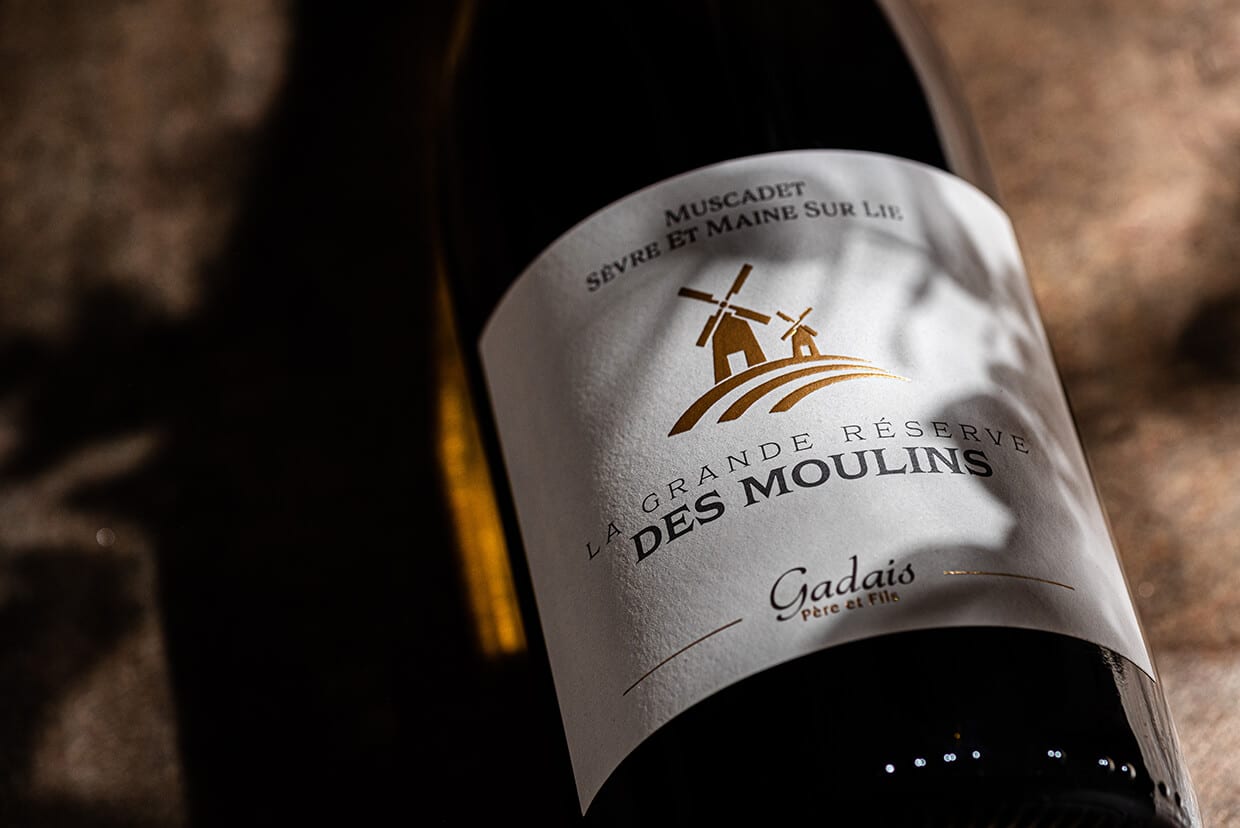
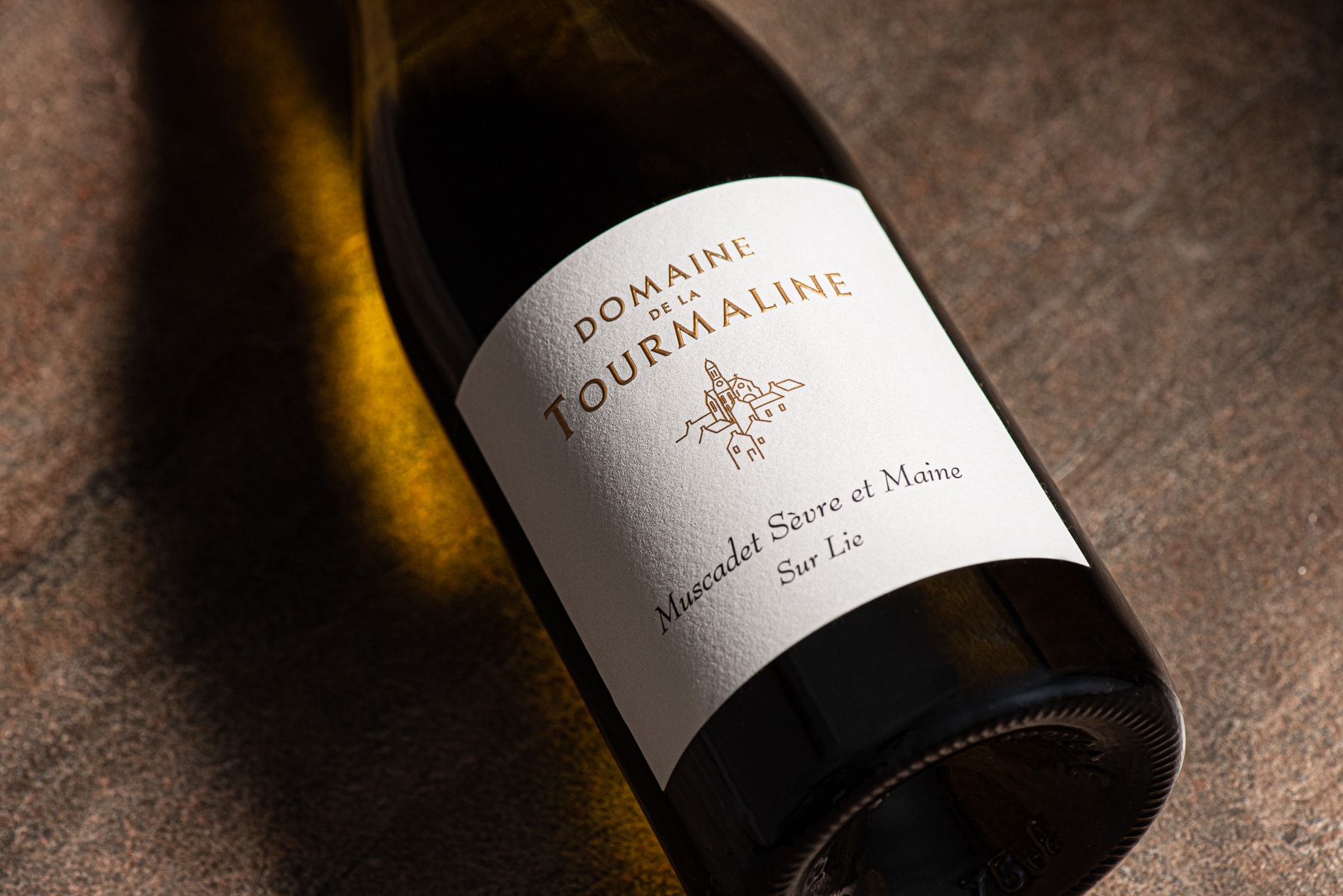
Domaine de
La Tourmaline
The extreme division of the estate into many distinct plots makes it possible to vinify according to terroir. The “Domaine de la Tourmaline” is the fruit of a subtle blending process and the result of the expertise handed down from father to son. This sur-lie Muscadet combines minerality, silky texture, and finesse. It is made in the tradition of the great wines of the Loire, within which the Muscadet Sèvre et Maine is one of the jewels in the crown.
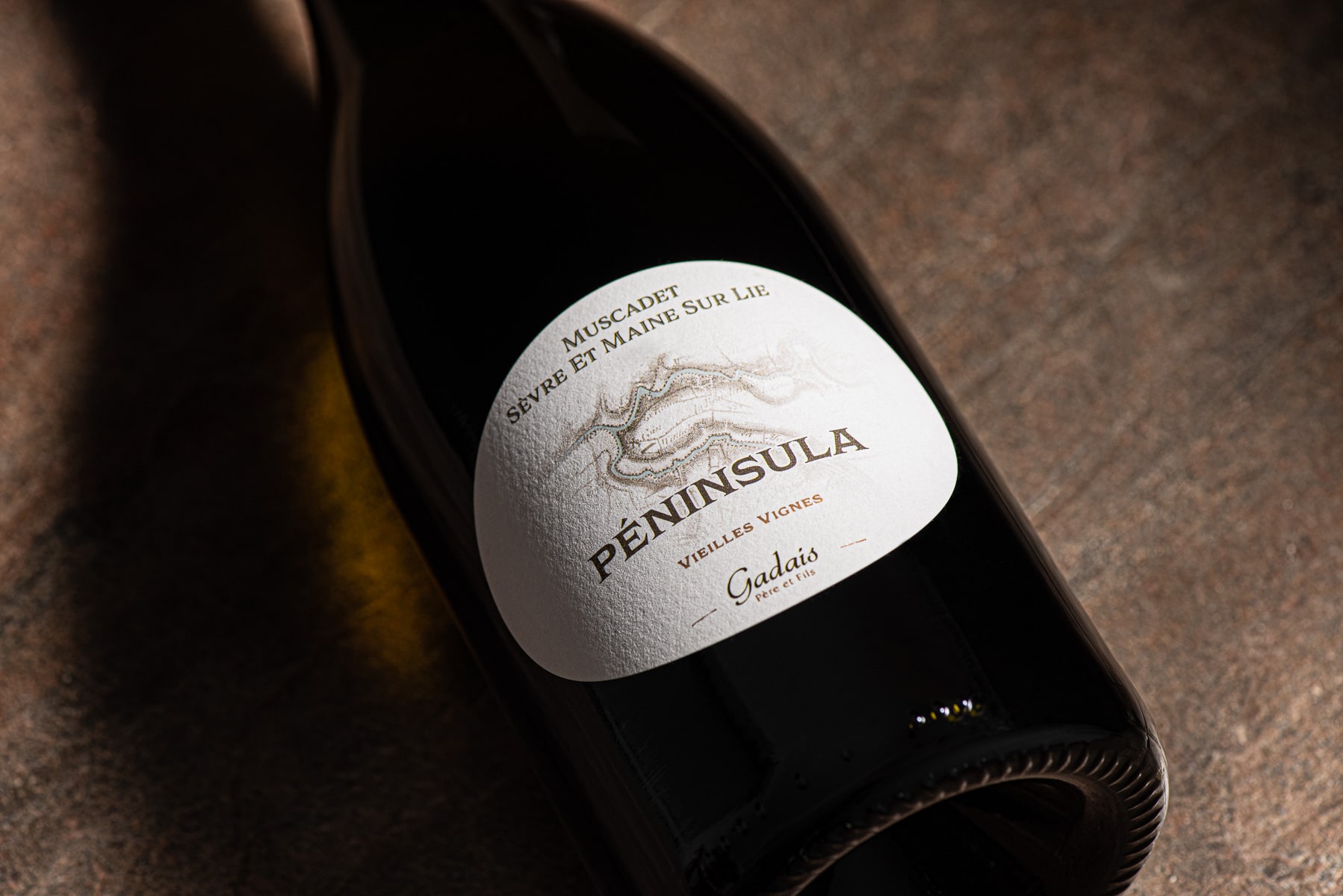
Péninsula Vieilles Vignes
The hills of the village of Saint Fiacre extend from the Sèvre to the Maine, thus forming a peninsula. Melon de Bourgogne, the specific variety used for Muscadet, has been king there for several decades. The “Péninsula” cuvée, a selection produced from vines that are more than 50 years old, is bottled after 14 months of lees ageing. This rich and harmonious Muscadet offers an ageability that will surprise even the most enlightened connoisseurs.
Plantation 1947
Nestled in the heart of the highest point in the Saint Fiacre municipality is the formidable and internationally renowned slope, Gras Moutons. In 1947, Louis Gadais was clearing land with his horse when he first recognised the exceptional geological potential of this nearly 1-hectare parcel. At 53 metres of elevation, on this land composed of amphibolite and gneiss with two micas, the gentle north-facing slope ensures that the berries ripen slowly.
After manual harvesting and fermentation with the most traditional native yeasts, a long period of ageing on the vinification lees follows, lasting 26 months. Throughout the winemaking process, every movement is carefully considered, intervention is limited, and sulphur use is kept to a minimum.
The hills of the village of Saint Fiacre extend from the Sèvre to the Maine, thus forming a peninsula. Melon de Bourgogne, the specific variety used for Muscadet, has been king there for several decades. The “Péninsula” cuvée, a selection produced from vines that are more than 50 years old, is bottled after 14 months of lees ageing. This rich and harmonious Muscadet offers an ageability that will surprise even the most enlightened connoisseurs.
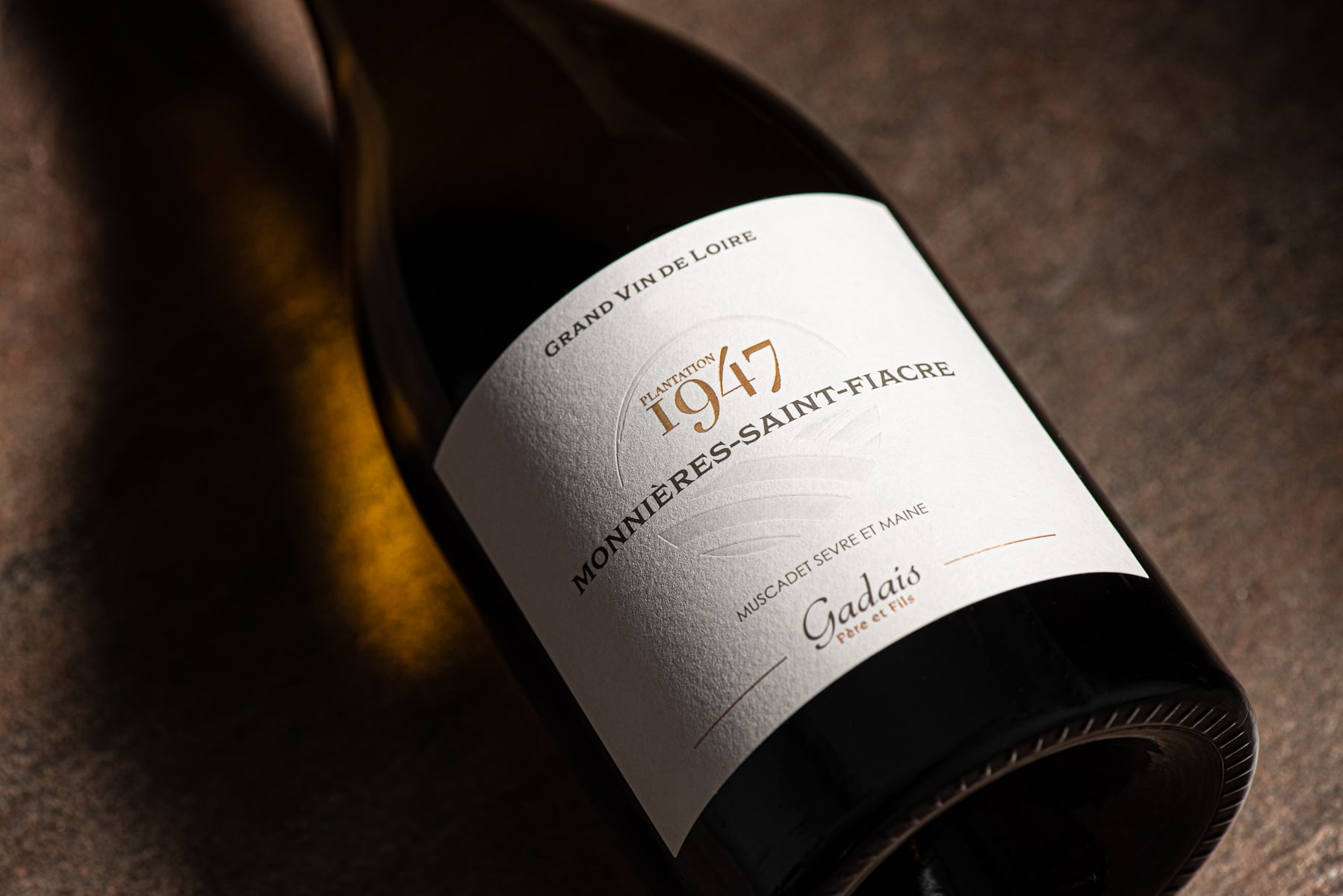
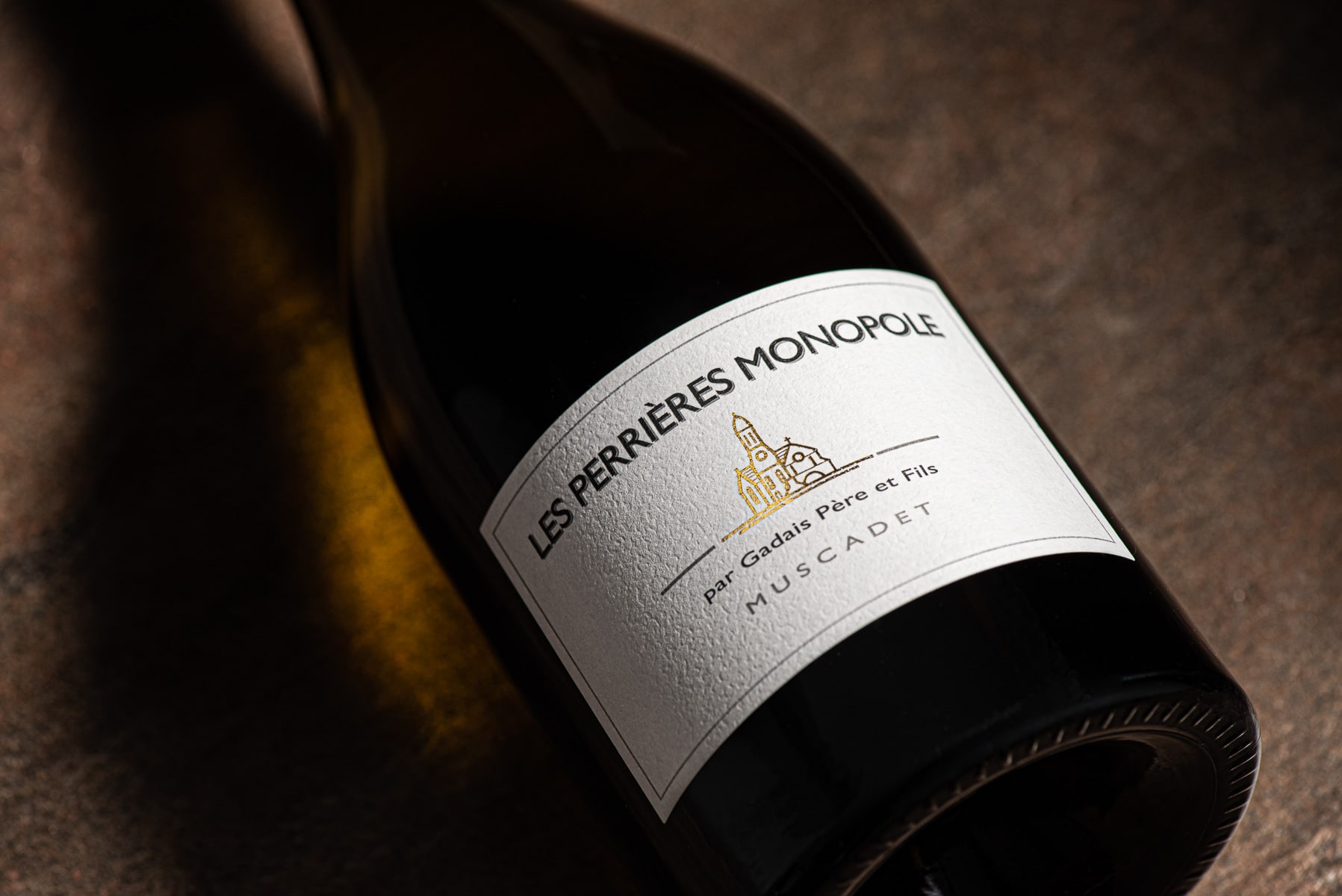
Les Perrières Monopole
From this pure south-facing hillside dominated by gneiss comes a fine, sophisticated, beyond elegant Muscadet. This is where, in the 1950s, Louis Gadais established his “Domaine des Perrières”, producing his wines in demi-muids (600 litre barrels).
Today, the vines are more than 40 years old and produce a rich and complex Muscadet. In order to reveal its complexity and in an homage to our ancestor, fermentation and ageing take place in 300-litre casks. Casks used for between 3 and 12 vintages only allow the wine to develop structure.
The objective is not to obtain an oaked flavour, but rather to create natural micro-oxygenation, which is essential for this terroir. On average, 32 months of ageing are needed to reveal this exceptional terroir and the aromatic richness of this great Loire wine, the “Perrières Monopole”.
Domaine Gadais
Muscadet Sèvre-et-Marine
Since 1952, Domaine Gadais has been developing its notoriety in France and throughout the world, thanks to its Muscadet Sèvre-et-Maine, which is recognised for its quality. Each vineyard parcel reveals the richness of the Loire Valley terroir to create exceptional cuvées. Pierre-Henri Gadais now imagines new presentation methods to highlight this dry white wine from the region. Discover the finesse and the aromatic diversity of Muscadet with Domaine Gadais cuvées.
Located in Saint-Fiacre, Domaine Gadais benefits from the AOC Muscadet Sèvre-et-Maine for its vineyard. This white wine from Loire Atlantique is produced using a grape variety called Melon de Bourgogne. With more than 50 hectares spread out over a hundred parcels, Pierre-Henri Gadais creates Muscadet Sèvre-et-Maine cuvées using a specific method for each parcel.
Each wine thus develops diverse aromas depending on the aspect of the vines and the characteristics of the soil. The handing down of Domaine Gadais from generation to generation allows it to pass expertise on and to allow its vines to flourish with time.
Conceived based on a selection of vines more than 50 years old, the Péninsula cuvée offers a rich and harmonious old-vine Muscadet. Pierre-Henri Gadais takes great care to preserve the family's history in order to create ever more exceptional wines. Domaine Gadais vineyards are also minimally treated, so as to preserve the soils and ecosystems as much as possible....
Exceptional wines that reveal the local terroir
Domaine Gadais produces 6 exceptional cuvées. Each one of them reveals a specific terroir with fresh and complex aromas, combining rich texture with finesse.
The Perrières Monopole cuvée comes from a pure south-facing hillside and more than 40-year-old vines. This Muscadet Sèvre-et-Maine is one of the great wines of the Loire region, with an exceptional aromatic richness.
The Plantation 1947 cuvée, from north-facing vines and a soil composed of amphibolite and gneiss with two micas, for its part, offers other aromas. The slow ripening of the berries allows the fruit to develop differently, while drawing from the mineral-rich soil.
The types of rock present in the soil vary from one parcel to the next.
The Grande Réserve des Moulins pushes its roots into the estate’s steep, rocky soils.
The Navineaux Amphibolite cuvée, on the other hand, comes from a 3-hectare parcel that benefits from iron- and magnesium-based rock in the soil.
Every aromatic note, every attribute, every texture in these Domaine Gadais Muscadet wines is determined by their terroir, but also by different winemaking techniques.
Specific winemaking methods for each cuvée
Every cuvée from Domaine Gadais is crafted and aged sur lie to reveal its aromatic richness. This natural yeast will endow the wines with certain qualities, notably their finesse, their personality, and their ageing potential. The length of sur-lie ageing therefore varies according to each Gadais Muscadet.
The Grande Réserve des Moulins cuvée benefits from sur-lie ageing for a minimum of 6 months, while this is extended to 26 months, or even 32 months for certain wines. Pierre-Henri Gadais pays close attention to each batch to ensure that the richness of the estate is highlighted.
To create the Perrières Monopole cuvée, vinification takes place in large casks in order to promote the micro-oxygenation necessary because of the complexity of this terroir. Lees ageing is also longer than for the other Muscadet Sèvre-et-Maine cuvées.
The terroir and the winemaking techniques of Domaine Gadais make each Muscadet unique in their class. Lovers of Loire Valley white wines can thus discover the many facets of sur-lie Muscadet to awaken their palates and to go on a tasting journey.
